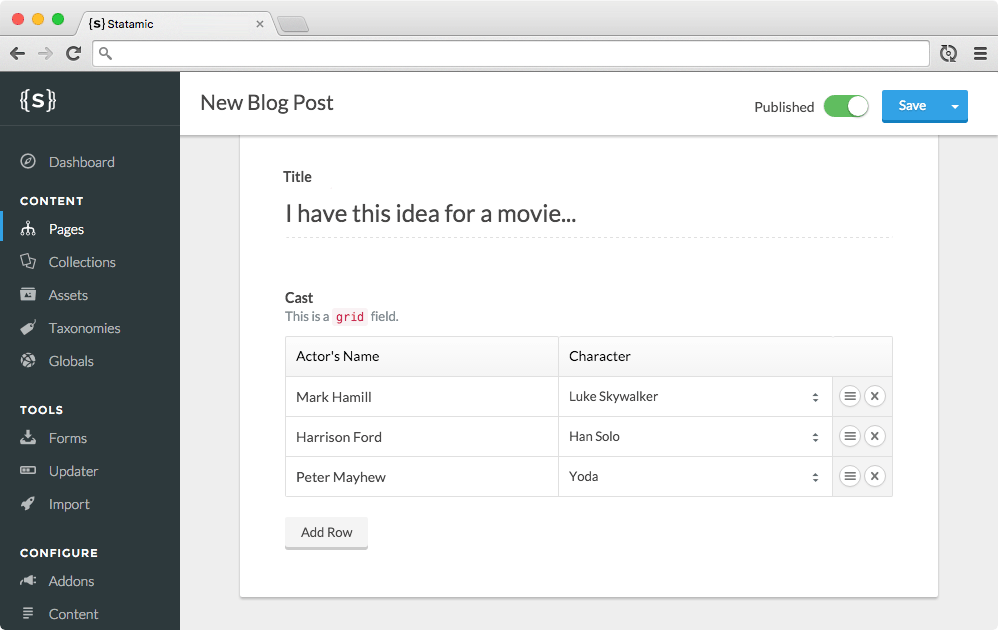Some 3 cool modern CMS for developers
It comes a time when you really need more speed, security, and best practices in your process of designing and coding your websites. Probably you work on websites which require a lot of content edition and management too. Once you launch a website, management becomes a tedious task that you have to solve as soon as possible.
Many solutions are offered to you to make the work simpler and easier, among which we have Content Management Systems commonly known as CMS. While this may not be surprising for most of you, especially those who are used to popular CMSes like WordPress and Joomla, there are some other CMSes that are cooler, they are more appropriate for developers and people who love deep flexibility in there applications.
I call them Modern Content Management Systems -mCMS. There are a few reasons why I set them aside as so:
- Use or recent coding style in PHP mostly based on the PHP-FIG
- Packages management with Composer
- Version Control with Git
- Use of recent versions (^ 5.3) of PHP
- Use of ORM
- Use of Markdown
- Unit Testing
- Data-Reactive components with modern JavaScript frameworks like React, VueJS, AngularJs, etc.
- Etc.
These frameworks guarantee four main things which make them so special:
- Remain in touch with your code you love
- Freely build anything you want
- Extend the project with your dream modules, themes, etc
- Destined for developers, designers, and content managers
- Mostly can be used to develop any type of application
- Internationalization & Geo-localization made easy
So, let's have a closer look at each one of them and discover what they can offer and what sets them off of other traditional frameworks.
1. Statamic 2

Statamic is built by Wildborn LLC and it's a paid CMS. You can still get a trial version that you can set up on your localhost and test it, what I did myself ;).
Even though the installation was a big tough, but I was finally able to figure it out. It was just a matter two clicks. What I noticed is that Statamic, unlike many CMSes which would take you through some forms to set up your database, it will just check your system requirement, ask you of your locales settings and your are good to go. By default statamic stores your content in static markdown files isn't that great.
Features: Statamic is a complete CMS with so many features it offers to designers, developers, content-oriented people, and to people with less knowledge:
- Drag and drop page building
- Images manipulation
- Many editors to choose
- Form responses and metrics
- One click updates
- Manage up to 6 different content types
- Multilingual
- Edit your content with markdown
- Live preview, which allows you see changes as you are making them
- Open taxonomies
- Version control
- etc
Statamic 2 is built with Laravel 5.1 what opens more possibilities in what you could accomplish with it.
2. OctoberCMS

Probably one of my favorite CMS ever. Started talking of OctoberCMS since last year. I am repeating myself, we'll come back to it. Likewise Statamic, OctoberCMS is fully built with Laravel since its beginning. And, unlike Statamic, OctoberCMS is entirely free with a dynamic team of passionate taking care of it.
Installing OctoberCMS is a beautiful experience. 1, 2, 3 clicks you are done. You can even start adding your themes, and plugins during the installation phase. And the dashboard is so beautiful.
OctoberCMS offers a gallery and marketplace themes, plugins which you can easily grab and set up your website in no time. As they say:
October doesn't impose any restrictions on the website page structure, HTML or CSS markup. There is not much difference between writing your markup in a text editor or in the October administration area, in the end, you will get the same final markup in the browser. Twig is one of the best tools for developers who want to adopt a CMS.
Let's have a look at some of its features:
- Twig as a templating engine
- Build your website with drag & drop of pages, plugins, partials, etc.
- October is built on Laravel, which gives you more power to create almost anything
- Page components, they allow you to add functionalities to your pages at any moment
- Static pages
- MarkDown editor
- Free themes and plugins from many developers
- You can extend the CMS with your own plugins, themes, add-ons
- etc
October is fully customizable and you can build any module you wish to have on your application. And one of its benefits is that you can create a project with a set of plugins, then uninstall the project, and later on you can install a new copy of octobercms with the same set of plugins. No waste of time to start looking around again.
3. PageKit

PageKit a new CMS built by Yootheme, with love and a lot of caffeine ;)
The first singularity in PageKit is that it's built with powerful components from the famous Symfony framework. The JavaScript behind it is made with Vue.JS by Evan You.
Likewise OctoberCMS, PageKit also has a marketplace where you can grab plugins and themes of your choice. You can also extend it by adding your own modules and plugins.
Honestly, I was surprised of how fast I could install PageKit. I think, it's the first CMS I've ever installed and I was able to set up a functional website, create a sample theme, a sample module, and play around the code within two hours.
There are some similarities between this PageKit and WordPress, especially in the organization of the dashboard, pages, posts and how content flows. If you are a WordPress fan, you shouldn't find it difficult at all to use PageKit.
Take it like, anything you use to do with WP, you do the same thing in PageKit with more interactivity and dynamism, and in a modern way.
Code-wise, PageKit is a mix of Laravel, and Slim in one hand and home-made coding style in the other hand, what gives it its singularities
Features:
- Easy to install and get started
- Can easily extend it with your own modules
- Simple drag & drop option to build anything
- Simple and flat dashboard
- HTML & Markdown editor
- Built-in commenting system
- Syntax highlighting
- Easy media management
- A debug toolbar to help you track bugs
Bottom line
While this is not to compare these CMSes, I think you can give each one of them a try and have an idea of their respective strength and weaknesses. That will help you, in time, to easily make a choice based on the project you have. I emphasized on them because they:
- Are easy to install, usually within a minute
- Make it easy to add/develop modules, plugins, themes
- Easily build multilingual websites
- Allow you to keep your development and designing habits
I believe these three are not the only ones in the family, please feel free to add any other I couldn't mention here and help improve the list. And if you loved the post, please share it with your peers.
